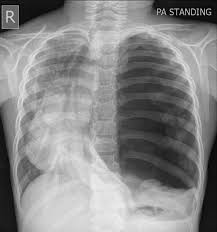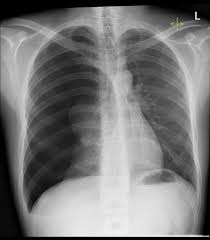
 Tension pneumothorax is considered to be present when a pneumothorax (primary spontaneous, secondary spontaneous, or traumatic) leads to significant impairment of respiration and/or blood circulation.
Tension pneumothorax is considered to be present when a pneumothorax (primary spontaneous, secondary spontaneous, or traumatic) leads to significant impairment of respiration and/or blood circulation.
Tension pneumothorax causes a type of circulatory shock, called obstructive shock.
Tension pneumothorax tends to occur in clinical situations such as ventilation, resuscitation, trauma, or in people with lung disease.
Tension pneumothorax is a medical emergency and may require immediate treatment.
Findings in people with tension pneumothorax are chest pain and respiratory distress, often with tachycardia and rapid breathing in the initial stages.
Other findings may include quieter breath sounds on one side of the chest, low oxygen levels and blood pressure, and displacement of the trachea away from the affected side.
Rarely, there may be cyanosis, altered level of consciousness, a hyperresonant percussion note on examination of the affected side with reduced expansion and decreased movement, pain in the epigastrium displacement of the apex heart beat and resonant sound when tapping the sternum.
Tension pneumothorax may also occur in someone who is receiving mechanical ventilation. p
